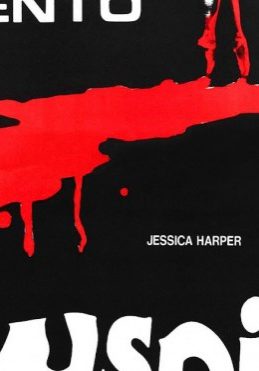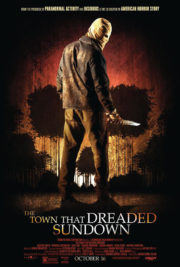“You could feel the vibes of the dead…” – Haunting Elegance Meets Visceral Horror in ‘Suspiria’
Directed by the Italian maestro Dario Argento, Suspiria (1977) is a film that leaves an indelible mark on the canvas of horror cinema. A tale woven with vibrant threads of supernatural and psychological terror, it tells the story of an American ballet dancer, Suzy Bannion, who enrolls in a prestigious German dance academy, only to unravel a labyrinth of witchcraft and murder. This spoiler-free overview invites both neophytes and seasoned fans to revisit the eerie corridors of Argento’s nightmarish vision.
Painting in Red: The Atmosphere of Fear
The true essence of horror in Suspiria is not just the macabre plotlines; it’s the meticulously crafted atmosphere that envelops the viewer. Moving beyond mere suspense, the film creates an otherworldly sense of foreboding through chiaroscuro lighting and a color palette as bold and arresting as a slashed artery. Argento’s approach relies heavily on the visual and aural to evoke dread—an artful blend of the fantastical and the grotesque that piques the imagination and sets one’s nerves on edge.
Cinematic Symphony of Horrors
The cinematography of Suspiria is a character in its own right. Luciano Tovoli’s lens captures elaborate set pieces and labyrinthine architecture, utilizing inventive camera angles to disorient and alarm. Argento’s use of vibrant colors—notably reds, blues, and greens—creates a nightmarish tableau reminiscent of a twisted fairy tale. Furnished with pioneering special effects for its time, the film’s visual mannerisms are nothing short of iconic, turning every frame into a piece of horrific opera.
The throbbing heartbeat of the film, however, is Goblin’s haunting score. The soundtrack—with its whispers, chants, and relentless percussion—works in concert with the visuals to hold the viewer in a vice grip of tension. Moments of silence, conversely, are deftly applied to amplify the sudden eruptions of terror that punctuate Suzy’s descent into the academy’s dark underbelly.
Threading the Needle Through Performance and Terror
The performances in Suspiria balance on a razor’s edge between the surreal and the grounded. Jessica Harper’s portrayal of Suzy is both vulnerable and compelling, providing a touchstone of relatability amidst the unfolding madness. Meanwhile, the supporting cast fulfills their roles not just as characters but as conduits for nightmarish expressions of fear and occult power.
Suspiria doesn’t confine itself to a single horror mechanism, instead opting for a tapestry approach—it weaves psychological depths with otherworldly menaces, while not shying away from visceral physicality when needed. It flirts with the supernatural, with the threat often lurking in the dark corners or the unexpected whisper of a shadow, rarely relying on gore, although its use of violence is striking and powerful when it occurs.
The movie’s underlying themes, while not the primary focus, do flirt with societal commentary. The isolation Suzy feels in a foreign land shadows broader themes of alienation and the search for identity in a world with hidden, sinister structures of power. While not overt, these elements serve to deepen the sense of unease that pervades the film.
In Conclusion: A Twisted Ballet of Horror to be Savored
As a horror film, Suspiria is both breathtaking and harrowing. Its unique blend of stylistic bravura, audiovisual mastery, and unfettered imagination secures its place as a landmark of horror innovation. While not for the faint of heart, the movie largely avoids gratuitous violence, instead opting to rattle its audience with psychological and supernatural terrors. Viewers with an appreciation for art house aesthetics and atmospheric terror will be spellbound, whereas those seeking a conventional narrative may find it bewildering.
For those willing to immerse themselves in its surreal horrors, Suspiria stands in contrast with both the contemporaneous and modern horror flicks, including Argento’s own filmography. It’s a movie that’s best savored by horror aficionados who relish a hauntingly beautiful nightmare.
Content Warning: The film contains intense scenes of violence and disturbing imagery, which some viewers may find distressing.
In summary, Suspiria is a vivid and disconcerting phantasmagoria, crafted not just to scare but to mesmerize. Its legacy is well secured, inspiring a range of directors and giving birth to a devoted cult following. Given its intrinsic strengths and few weaknesses, my recommendation is unreserved for those drawn to the shadows—Suspiria is an essential watch that captivates with its dark, enchanting waltz of terror.




